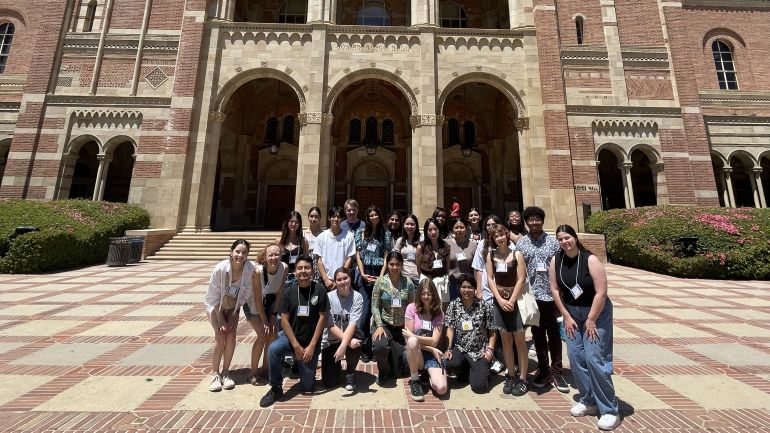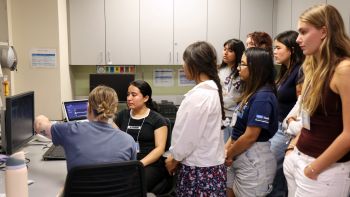This post was written by high school students from the Summer Research Boot Camp in the labs of Andrew Fuligni and Sandra Graham at UCLA, supported by UCLA Center for the Developing Adolescent, and led by Piper Harris, Naomi Kline, Xochitl Arlene Smola, and Ava Trimble.
By Rubi Alvarez, Madison Cheungsomboune, and Miguel Partida
What does friendship mean to an adolescent? Is it to have companionship, someone to trust? Is it someone who is funny and is generally fun to be around? Is it someone loyal and mature that will have your back long-term? For some adolescents, friendships are made to avoid feeling lonely, standing out, or being picked on. During the 2023 UCLA Adolescent Boot Camp, we learned about friendships and school diversity. They are voluntary, egalitarian (equal), and are based on mutual interests.
It’s important to understand why friendships during adolescence are important. For one, youth with friends fare better than their friendless counterparts in self-worth, mental health, loneliness, school achievement, and more. However, the type of friendship could potentially lead to increased risk-taking. During adolescence, we experience greater development of our socioemotional system (which encourages reward-seeking) that doesn’t yet match the development of our cognitive control system (which sharpens decision making). A greater desire to fit in combined with influence from friends can make us even more susceptible to pursue experiences that feel rewarding, like making risky decisions. To help us during this period, we need many opportunities to create meaningful friendships and to take healthy risks (for example, taking a challenging class).
What do friendships mean for school diversity and the inclusion of minority students? Is increasing school diversity the final step for inclusion or is it only the beginning? School diversity allows all students to gain more comprehensive perspectives through the opportunity to work and learn with people from a variety of backgrounds and cultures. It also leads to more complex social identities, less vulnerability, and importantly, more cross-ethnic friendships. Due to “propinquity,” the likelihood of friendships forming due to proximity (who we are physically or geographically closest to), greater diversity in schools would give adolescents the opportunity to make friends with cross-ethnic peers. As adolescents ourselves, ethnic diversity in our schools has allowed us to make long-lasting friends with peers of other ethnicities. These connections helped us feel more involved in our school and gave us a higher sense of belonging. There is value in fostering cross-ethnic friendships in schools.
However, we aren’t saying that by simply increasing school diversity that suddenly cross-ethnic friendships will form. Because friendships are mutual and reciprocated, adolescents can often have a stronger inclination towards peers of the same ethnicity who share similar aspects of their identity. Cross-ethnic friendships that go beyond an acquaintance require an investment from both sides. Adolescents can lean on their existing friendships for support to make forming new cross-ethnic friends less intimidating. To answer the final question we posed, increasing school diversity is just the beginning of minority inclusion. Diversity is essential for creating positive communities in society, and starting with adolescents can contribute to future, long-term cross-ethnic friendships.



